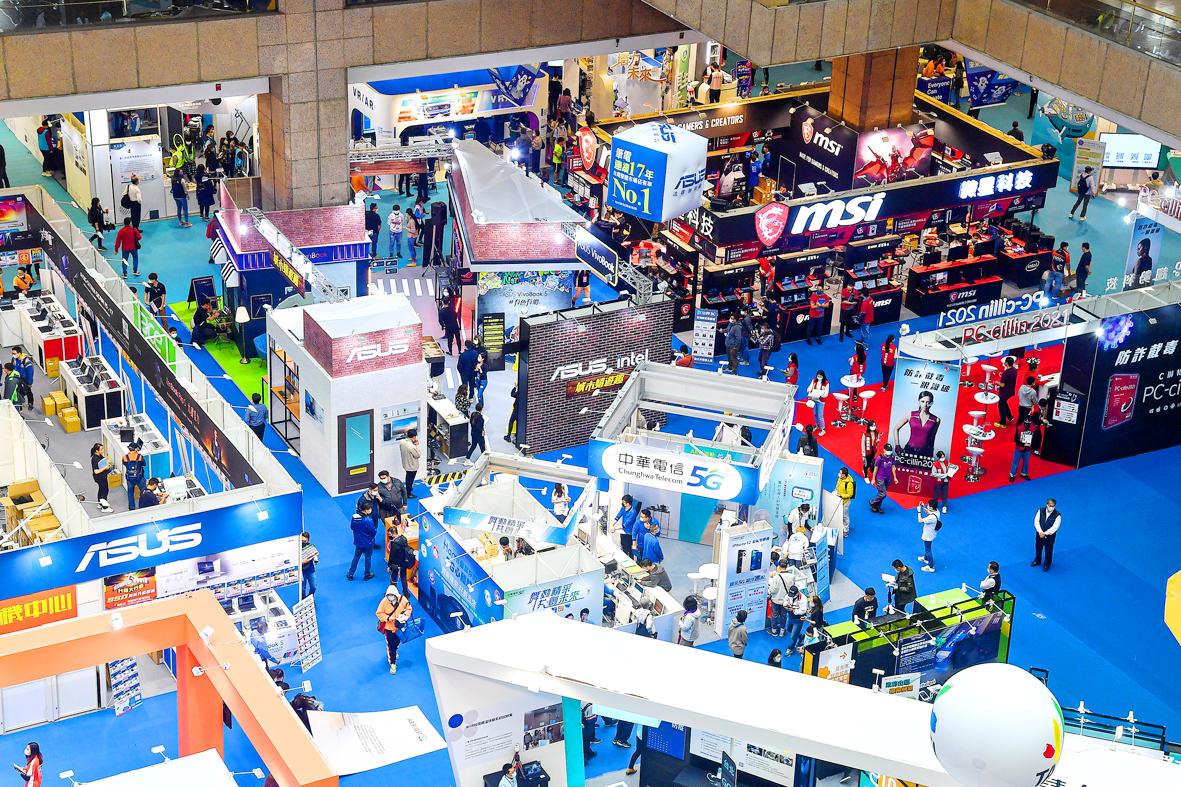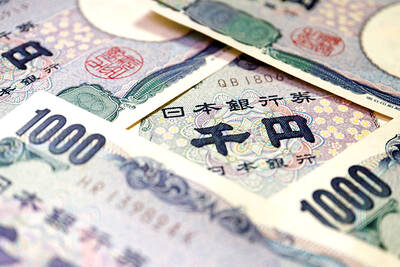Taiwan’s technology sector, in particular the semiconductor industry, is expected to remain a key driver of its economic growth next year, DBS Bank Ltd said in a report last week.
However, tech companies would still be pressured to shift sensitive production out of China and further diversify their supply chains as the US-China technology dispute takes root, the bank said.
Strong technology exports boosted the nation’s GDP, which expanded by a better-than-expected 3.92 percent year-on-year last quarter, the most since the second quarter of 2015. That prompted the Directorate-General of Budget, Accounting and Statistics (DGBAS) on Nov. 27 to adjust upward its full-year growth forecast to 2.54 percent from 1.56 percent.

Photo: CNA
The DGBAS predicted exports might remain strong this quarter and grow 7.75 percent year-on-year on the back of strong demand for new technology applications, but DBS said that global demand for computers and consumer electronics is expected to decline next year, as “the one-off purchases related to remote work and distance learning” driven by the COVID-19 pandemic dissipate.
However, demand for cloud services, data centers and 5G applications would likely continue to increase next year, as many countries build digital infrastructure and push digital transformation after the pandemic, DBS said.
In addition, smartphone demand is poised to recover next year as global income conditions improve and more consumers upgrade their smartphones as 5G networks expand, it said.
“Overall, the outlook for semiconductor demand remains constructive,” DBS economist Ma Tieying (馬鐵英) said in the report.
Taiwan has managed to maintain positive GDP growth this year despite the pandemic, which DBS forecast would expand 1.8 percent this year and 4.2 percent next year, citing the government’s early and effective response to the outbreak, as well as the tech sector’s strong performance.
Given the mild inflation outlook and the strong New Taiwan dollar, the central bank is expected to hold its policy interest rate steady at 1.125 percent through next year, as pressure to normalize rates would remain low in the near term, DBS said.
However, the potential impact of the US’ transition in leadership is worth watching, and there could be some tactical adjustments in US-China trade issues as multilateralism regains US support under US president-elect Joe Biden’s administration, the bank said.
Even though US-China trade tensions might improve under Biden’s presidency, the two countries’ tech sector rivalry would continue next year, DBS said, citing bipartisan concerns in the US about national security risks resulting from China’s advances in 5G, artificial intelligence and other new technologies.
Moreover, the COVID-19 has also caused companies to weigh the risks of geopolitical tensions among countries and diversify their supply chains, with some firms shifting their manufacturing base out of China to other Asian countries such as India, Vietnam and Thailand.
“To Taiwan, the trade disruption risk as a result of [the] China-US trade war may decrease in 2021. But pressure would remain for the Taiwanese tech companies to diversify their supply chains to hedge the risk of China-US tech tensions,” Ma said.
“In addition, [the] leadership transition in the US creates some uncertainties for the outlook of a bilateral free-trade agreement (FTA) between Taiwan and the US. The focus of Taiwan’s FTA talks may shift towards multilateral agreements like the CPTPP [Comprehensive and Progressive Agreement for Trans-Pacific Partnership] going forward,” she added.

AI TALENT: No financial details were released about the deal, in which top Groq executives, including its CEO, would join Nvidia to help advance the technology Nvidia Corp has agreed to a licensing deal with artificial intelligence (AI) start-up Groq, furthering its investments in companies connected to the AI boom and gaining the right to add a new type of technology to its products. The world’s largest publicly traded company has paid for the right to use Groq’s technology and is to integrate its chip design into future products. Some of the start-up’s executives are leaving to join Nvidia to help with that effort, the companies said. Groq would continue as an independent company with a new chief executive, it said on Wednesday in a post on its Web

RESPONSE: The Japanese Ministry of Finance might have to intervene in the currency markets should the yen keep weakening toward the 160 level against the US dollar Japan’s chief currency official yesterday sent a warning on recent foreign exchange moves, after the yen weakened against the US dollar following Friday last week’s Bank of Japan (BOJ) decision. “We’re seeing one-directional, sudden moves especially after last week’s monetary policy meeting, so I’m deeply concerned,” Japanese Vice Finance Minister for International Affairs Atsushi Mimura told reporters. “We’d like to take appropriate responses against excessive moves.” The central bank on Friday raised its benchmark interest rate to the highest in 30 years, but Bank of Japan Governor Kazuo Ueda chose to keep his options open rather than bolster the yen,

Even as the US is embarked on a bitter rivalry with China over the deployment of artificial intelligence (AI), Chinese technology is quietly making inroads into the US market. Despite considerable geopolitical tensions, Chinese open-source AI models are winning over a growing number of programmers and companies in the US. These are different from the closed generative AI models that have become household names — ChatGPT-maker OpenAI or Google’s Gemini — whose inner workings are fiercely protected. In contrast, “open” models offered by many Chinese rivals, from Alibaba (阿里巴巴) to DeepSeek (深度求索), allow programmers to customize parts of the software to suit their

Global server shipments are expected to surge to 15 million units next year, from 4 million units this year, with artificial intelligence (AI) servers accounting for about 30 percent, driven by massive capital spending by major cloud service providers, the Market Intelligence and Consulting Institute (MIC) said on Thursday last week. Major cloud service providers — including Google’s parent company Alphabet Inc, Microsoft Corp, Amazon.com Inc and Meta Platforms Inc — are projected to budget US$450 million for capital expenditure next year, up from US$400 million this year, MIC ICT [information and communications technology] Industry Research Center director Edward Lin